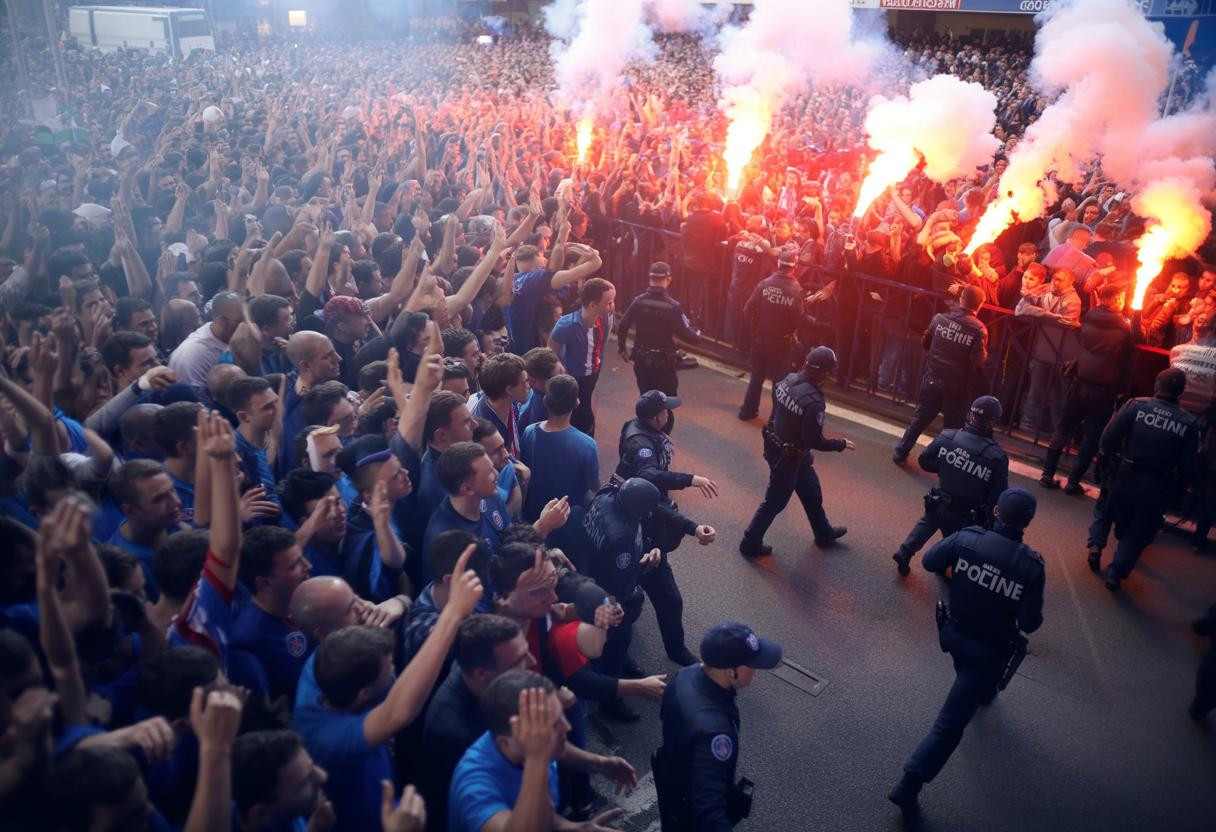When PSG’s historic 5-0 Champions League victory over Inter Milan triggered over 500 arrests in Paris celebrations, it revealed something profound about the intersection of sports triumph and social dynamics. This wasn’t just a football match—it became a real-time case study in how massive sporting achievements can simultaneously unite and divide communities in unexpected ways.
The tactical masterpiece that changed everything
PSG’s demolition of Inter Milan represented more than just goals on a scoreboard. Nineteen-year-old Désiré Doué’s two-goal performance exemplified how youth can dominate Europe’s biggest stage, with his market valuation potentially reaching astronomical heights. This breakthrough performance demonstrates how young talents can unlock massive valuations through single defining moments.
The 5-0 margin didn’t just break records—it surpassed every Champions League final in history, exceeding even Real Madrid’s legendary 1960 performance. Luis Enrique’s tactical approach blended experienced players like Achraf Hakimi with emerging stars, creating a dynamic that Inter Milan simply couldn’t match.
When celebration becomes chaos
The transformation from jubilation to unrest reveals critical insights about crowd psychology during major sporting events. Mass euphoria operates on predictable patterns, often escalating when collective emotions meet urban infrastructure limitations.
The psychology of collective behavior
Research shows that large-scale celebrations trigger specific neurological responses that can overwhelm individual decision-making. Just as athletes use mental techniques to manage pressure—similar to methods used by champion athletes in high-stakes competitions—crowds require structured outlets to channel intense emotions constructively.
The 500+ arrests in Paris weren’t random incidents but followed identifiable escalation patterns seen in previous major sporting celebrations worldwide. Overcrowded metro stations, blocked thoroughfares, and insufficient crowd dispersal points created pressure cookers of human emotion.
Economic and social undercurrents
PSG’s Qatari ownership adds complex layers to fan celebrations. Wealth concentration symbolism can trigger underlying socioeconomic tensions, transforming pure sporting joy into expressions of broader social frustrations. Communities feeling excluded from elite football’s financial ecosystem may view massive celebrations as disconnected from their daily realities.
Strategic insights for future management
The Paris incident offers actionable lessons for city planners and security professionals worldwide. Understanding physiological crowd responses becomes crucial—just as targeted physical interventions can rapidly improve health outcomes, specific crowd management techniques can prevent celebration-to-chaos transitions.
Preemptive measures that work
Intelligence-driven crowd prediction should focus on fan faction behaviors, transportation chokepoints, and historical celebration patterns. Mobile response units positioned strategically can redirect energy before it becomes destructive.
Technology integration offers promising solutions. AI-driven crowd monitoring systems can identify dangerous density levels and emotional escalation points in real-time, enabling proactive rather than reactive responses.
The global football transformation
PSG’s victory reshapes European football’s landscape in measurable ways. French football’s UEFA coefficient boost will attract increased investment and talent, while PSG’s commercial partnerships gain significant value from Champions League winner status.
This success model—blending youth development with strategic experience—may influence how other clubs approach tactical evolution. Similar transformation patterns exist across sports, where strategic adaptations at crucial moments create lasting competitive advantages.
Lessons that extend beyond football
The PSG-Paris unrest combination reveals how sporting success amplifies existing social fractures while simultaneously creating opportunities for community healing. When managed thoughtfully, major sporting achievements can bridge divides rather than widen them.
Future celebrations require community-inclusive planning that acknowledges both the euphoria and the underlying tensions that major victories can expose. The key lies in channeling collective energy constructively rather than simply containing it.
